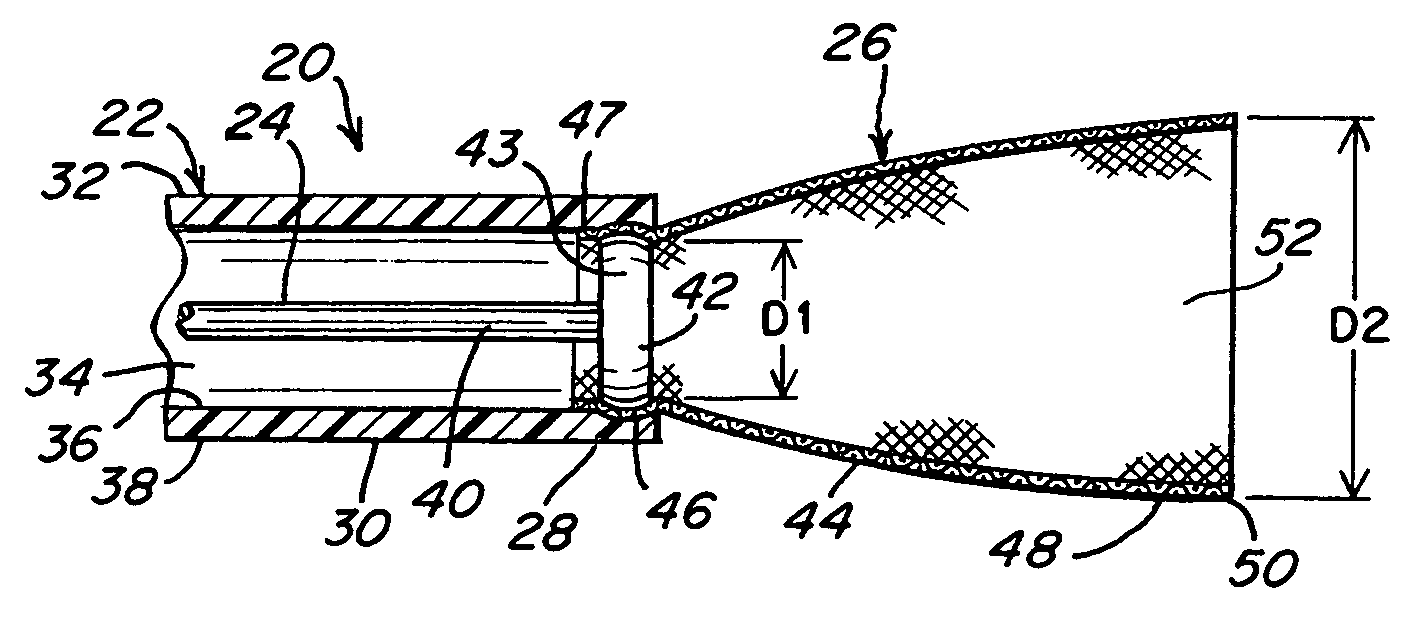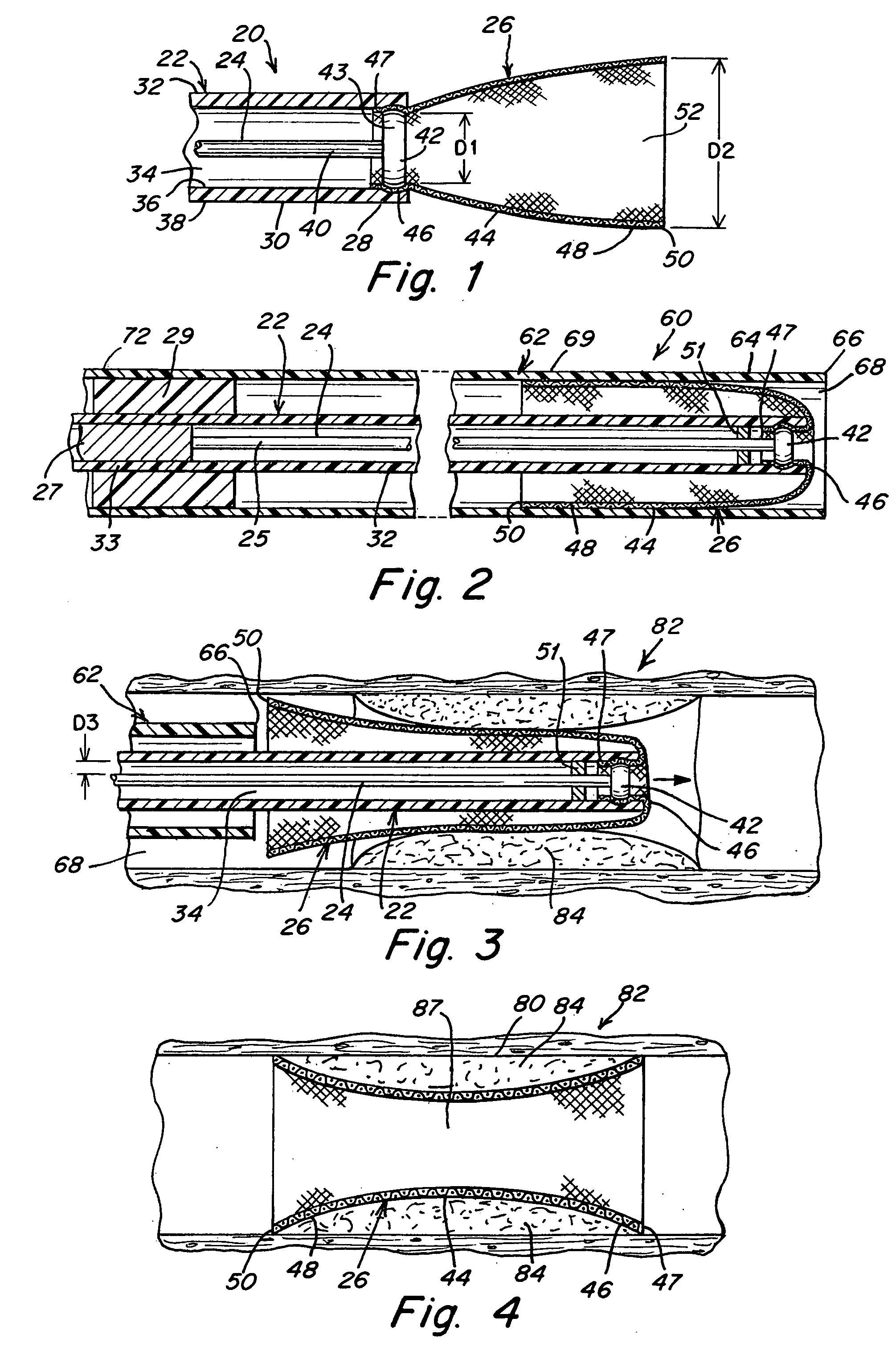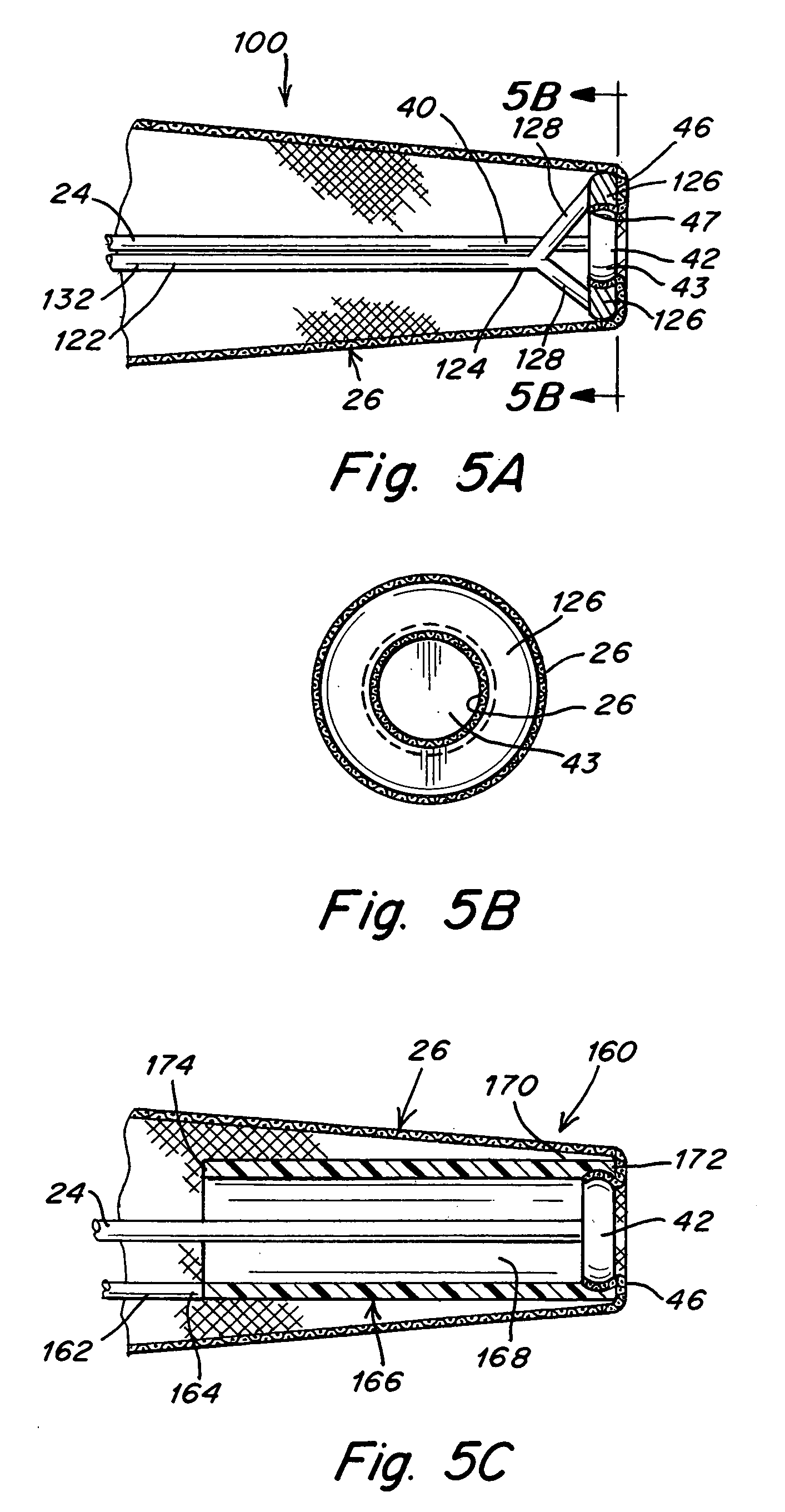Everting stent and stent delivery system
a technology of stent and stent, which is applied in the field of stents, can solve the problems of limiting efficacy, myocardial infarction, even death, and limiting efficacy, so as to prevent large pieces from breaking off, stabilize the thrombus, and stabilize the thrombus
- Summary
- Abstract
- Description
- Claims
- Application Information
AI Technical Summary
Benefits of technology
Problems solved by technology
Method used
Image
Examples
Embodiment Construction
[0026] The following detailed description should be read with reference to the drawings, in which like elements in different drawings are numbered identically. The drawings, which are not necessarily to scale, depict selected embodiments and are not intended to limit the scope of the invention. Several forms of invention have been shown and described, and other forms will now be apparent to those skilled in art. It will be understood that embodiments shown in drawings and described above are merely for illustrative purposes, and are not intended to limit scope of the invention as defined in the claims that follow.
[0027]FIG. 1 illustrates a stent delivery assembly including a stent delivery device 20, a stent 26, a delivery shaft or tube 22, and an elongate release member 24. Release member 24 can be used to releasably secure or couple stent 26 to delivery shaft or tube 22. Stent26 is illustrated in a configuration prior to being everted and proximally disposed about delivery tube 2...
PUM
 Login to View More
Login to View More Abstract
Description
Claims
Application Information
 Login to View More
Login to View More - R&D
- Intellectual Property
- Life Sciences
- Materials
- Tech Scout
- Unparalleled Data Quality
- Higher Quality Content
- 60% Fewer Hallucinations
Browse by: Latest US Patents, China's latest patents, Technical Efficacy Thesaurus, Application Domain, Technology Topic, Popular Technical Reports.
© 2025 PatSnap. All rights reserved.Legal|Privacy policy|Modern Slavery Act Transparency Statement|Sitemap|About US| Contact US: help@patsnap.com



